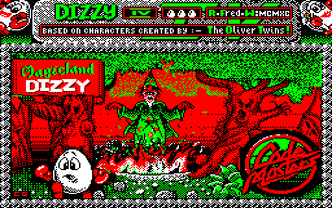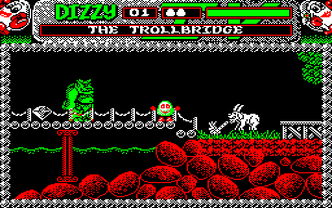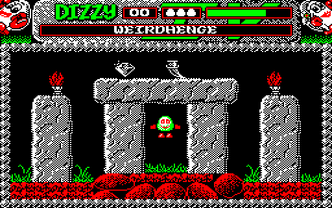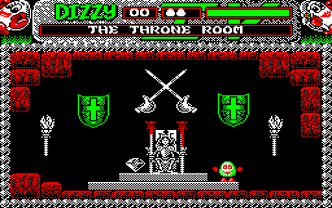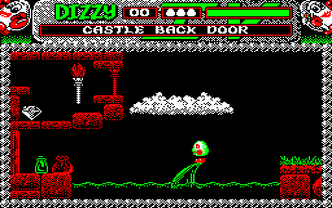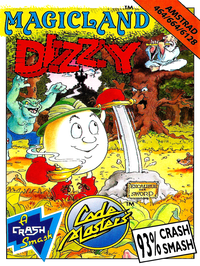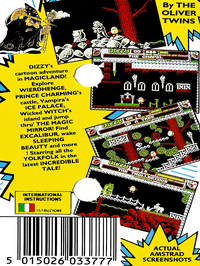Navigation:
Magicland Dizzy Amstrad CPC
This game entry is not "published" yet and will not appear in game browers by default! (Edit and set publish = 1)
DIZZY'S cartoon adventure in MAGICLAND! Explore WIERDHENGE, PRINCE CHARMING's castle, Vampira's ICE PALACE, Wicked WITCH's island and jump thru' THE MAGIC MIRROR! Find EXCALIBUR, wake SLEEPING BEAUTY AND MORE! Starring all the YOLKFOLK in the latest INCREDIBLE TALE! — Cassette cover
Magicland Dizzy is a platform adventure game published in Europe in 1990 by Codemasters for the ZX Spectrum, Commodore 64 and Amiga platforms. By 1992 there were also DOS, Atari ST and Amstrad CPC versions available.
It is the sixth game in the Dizzy series, and the fourth adventure-based Dizzy title. The story, set in a fantasy world called Magicland, follows on from the events of Fantasy World Dizzy, the previous adventure title. In Magicland Dizzy the player controls Dizzy, an egg-shaped character, who is trying to save six of his friends who have been placed under spells by the Evil Wizard Zaks.
The game was the first Dizzy game not to be developed entirely by Dizzy's creators, the Oliver Twins. Instead, whilst they were focusing on other projects, Magicland Dizzy was designed by Neal Vincent and coded by external developer Big Red Software. The Oliver Twins retained design-approval oversight.
The game is sometimes alternatively known by its development title, Dizzy 4, with the Roman numeral IV visible at the top of the game screen, behind the player's score. A prequel, Into Magicland, was released to promote the game and featured a new character that was never seen in any of the series games again. The game was widely acclaimed by critics across the platforms with scores typically in the 80-95% region. Criticism was leveled at its similarity to previous games in the series and the awkward inventory system. By November 1991 it was noted that the Dizzy games had sold more than half a million units across all platforms.
Source:Wikipedia
